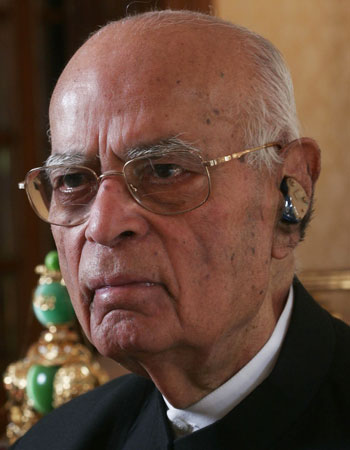Sardarilal Mathradas Nanda (सरदारीलाल नंदा)

Mathra Das, an office supervisor at the Port Trust factory in Manora, and Pooran Devi had their first child, Nanda, on October 10, 1915. From 1 March 1970 until 28 February 1973, he was the 7th Chief of the Naval Staff and an admiral in the Indian Navy. During the Indo-Pakistani War of 1971, he served as the head of the Indian Navy and successfully implemented a naval blockade of both West and East Pakistan, aiding India in the country's resounding triumph.
Nanda began his professional career with a six-month training programme on the Deepawati. His subsequent task took him to Calcutta. He was instructed in Calcutta to travel to Khulna, assume control of a river ship, and patrol the Sundarbans. He was assigned to the sloop HMIS Narbada (U40), which was leaving Madras for Japan in June 1946. As a component of the British occupation forces, the ship was stationed in Kure, Hiroshima, and then moved to Sasebo, Nagasaki, as a part of the US occupation forces. He received a backdated commission as a Lieutenant in the Royal Indian Navy (RIN) on October 19, 1946, with seniority from October 10, 1940.
He was appointed managing director of Mazagon Dock Limited in 1964. He first served as Flag Officer Commanding Indian Fleet in 1966, then in 1968, he was named Flag Officer Bombay. The Bombay command was elevated, and vice admiral Nanda assumed command as the first Flag Officer Commanding-in-Chief Western Naval Command. Under his direction, the Navy effectively enforced naval blockades on two fronts, assaulted Karachi with missile boats, and blasted ports in East Pakistan with INS Vikrant aircraft. He received the Param Vishisht Seva Medal and the Ati Vishisht Seva Medal for his remarkable service, as well as the Padma Vibhushan, the second-highest civilian honour.
Leave Your Suggestion